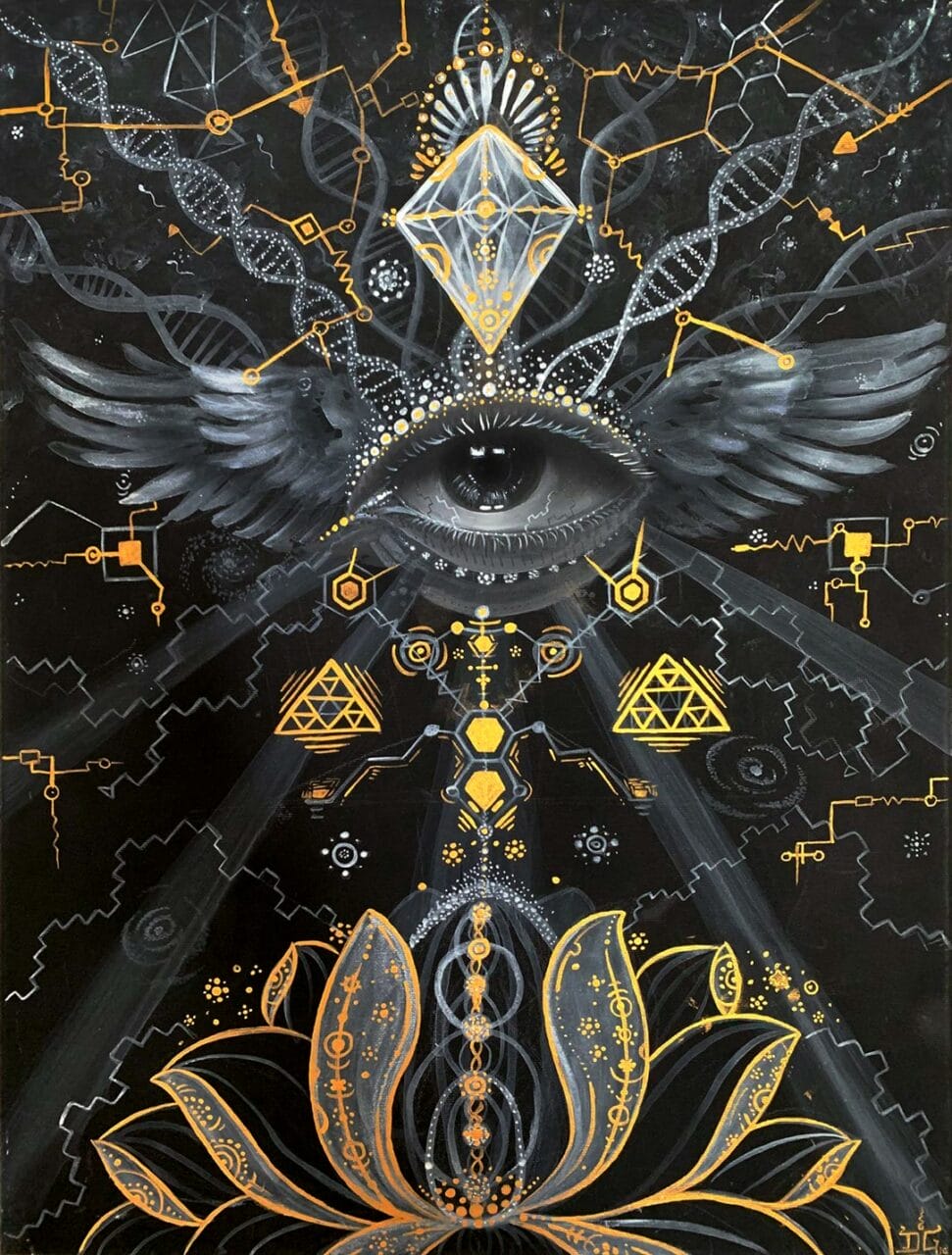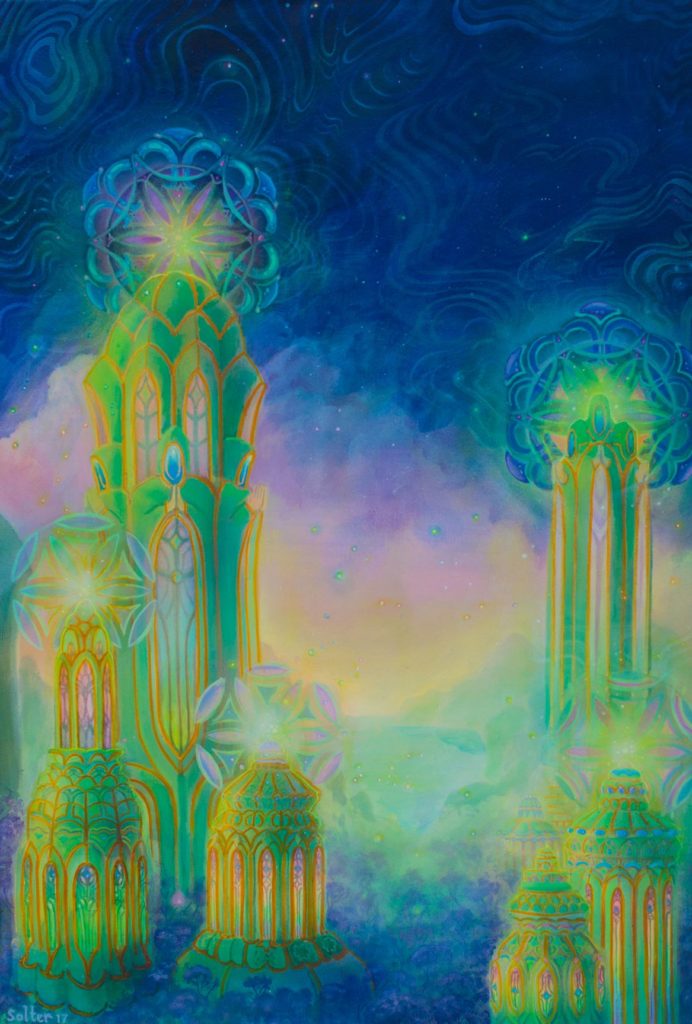
© Uni Kaya
Historical Chronicle of Magic Mushrooms
The origins of Magic Mushrooms can be traced back to 9000 BC according to historical records. These unique mushrooms, boasting over 200 species, contain psilocybin that gives rise to hallucinogenic effects. The effects can range from altered perception and sensory hallucinations to profound spiritual experiences. For thousands of years, these mushrooms have been employed in spiritual ceremonies, rituals, and practices by various cultures and tribes. Many of these historical uses originate from North and South America.
Magic Mushrooms in the Ancient World
Over the course of history, numerous cultures have made use of natural psychedelics. As evidenced by discoveries in the Sahara Desert, Psilocybe Cubensis was used by humans over 7000 years ago. Archaeological findings reflect the depiction of this psychotropic substance in prehistoric art across different regions. For instance, the native tribes of North Africa in the Sahara illustrated its use in their artwork dating back to around 9000 BC. Similarly, the notable Selva Pascuala rock mural painting in Spain, nearly 6000 years old, suggests the utilization of Psilocybe Hispanica in religious rituals. The influence of these substances on our cultural evolution, religious practices, art, societal norms, and everyday life is becoming more noticeable. This substance has undeniably made a significant mark on our culture and society.
Historical Overview of Magic Magic Mushrooms Consumption
Historically,magic Magic Mushrooms consumption has a long-standing history. The mind-altering substance known today has been used over various centuries, with diverse practices associated with its use. It’s about time for Strongest Magic Mushroom Strain Canada to delve into the historical path that has led Magic Mushrooms to its current stature.
Key Takeaways
- Dried Magic Mushrooms have had a long history in traditional rituals and spiritual healing. Nowadays, they are used as a treatment for mental health disorders.
- Magic Mushrooms played a significant role in defining the hippie culture and fueled the psychedelic revolution, advocating for its recreational use.
- Key figures such as Wasson, Sabina, and McKenna brought psilocybin to the attention of the contemporary world.

© Jonathan Solter
Backing the Stoned Ape Theory
Terence McKenna proposed the Stoned Ape Hypothesis, suggesting that psilocybin may have contributed to human evolution, specifically intellectual development. Despite certain criticisms, the intriguing aspects of this theory are undeniable.
Ancient Societies and Sacred Rituals
Historical societies portrayed cubes through symbols, artwork, and statues, indicating the ritualistic use of Magic Mushrooms. The Mayans and Aztecs utilized it for liaising with supernatural beings, including gods. Within the culturally rich Aztec society, it was referred to as “teonanácatl“, meaning “flesh of the gods”. The concept of a psychedelic experience was unfamiliar, causing them to view it as a divine entity. Venturing north to Siberia, hallucinogenic Magic Mushrooms were employed by Siberian shamans. They specifically used the hallucinogenic substance (Magic Mushrooms) known as “Amanita Muscaria” for spiritual healing and traditional practices, despite its toxic nature. This usage dates back nearly ten thousand years. In African tribal rituals, particularly among the Congolese and Zimbabwean tribes, cubes were used for communion with ancestors, to instigate visions, and promote spiritual healing. These historical societies shape the modern context of psilocybin use. The reverence for this substance in these cultures originated from its divine connotations and its ability to trigger mystical experiences.
Magic Mushrooms in Myth and Folklore
Countless stories, including those from Gordon Wasson, have highlighted the connection between Magic Mushrooms and the mystical world, underlining its role in folklore and mythology as a medium for divine communication and enlightenment. In ancient India, the Soma—a ceremonial beverage mentioned in the Vedas—was thought to trigger altered consciousness states. Scholars like Wasson speculate that it could have been made from psychoactive plants, specifically fly agaric. Some even suggest that this ancient drink might have been a mixture of various plants. Regardless of its origin, the psychedelic history suggests that Soma facilitated the appearance of sacred symbols during rituals, symbolizing a portal to higher knowledge or spiritual enlightenment.
The Contemporary Era
A Brief Review of the
Beginnings
Historical documents from the pre-Columbian era indicate that the Mayans and Aztecs utilized psilocybin Magic Mushrooms. During the 15th and 16th centuries, Spanish authorities deemed its consumption as barbaric and subsequently outlawed it. In spite of the prohibition, shamans secretly continued to ingest magic Magic Mushrooms, thus preserving their age-old traditions for over 400 years.
Revival in the Western World
The resurgence of these substances in the West occurred in the 1950s, spearheaded by individuals such as R. Gordon Wasson, Roger Heim, and Albert Hofmann. During an expedition to Mexico, they managed to extract the two psychedelic components (psilocybin and psilocin) from the Magic Mushrooms acquired from the Mazatec tribe. Following this, Wasson popularized his expeditions, usages, and understandings of magic Magic Mushrooms through Life magazine. His articles and personal narratives resulted in the recognition of the substance as a potent hallucinogen. By the advent of the 1960s, the substance had evolved into a symbol of the Hippie movement and was regarded as a conduit to spiritual experiences. However, its usage also triggered significant debate and instigated a revolution in the recreational consumption of hallucinogenic substances.
Progression: Worldwide Prohibition
In 1971, psilocybin was classified as a Schedule 1 illicit drug by the United Nations Convention on Psychotropic Substances, alongside Lysergic Acid Diethylamide and N, N-Dimethyltryptamine. These substances were collectively considered to have no medicinal value and a high risk of misuse. This led to a broad-scale criminalization in Western nations, including Canada and the U.S., severely limiting the spiritual and therapeutic uses of the substance.
The Modern Resurgence of Psilocybin
Recently, there has been a softening of the strict laws governing psilocybin usage, beginning with its decriminalization. This amendment is in line with the UN’s provision for treaty member countries to regulate the substance as per their own judgement. Simultaneously, a growing body of research and clinical trials regarding psychedelics and consciousness robustly endorses the potential medicinal uses of psilocybin. A 2021 study investigating the therapeutic use of psychedelics suggests that the 1970 prohibition considerably hindered further investigation. However, an initial study in 2004 revived interest in psilocybin, proposing potential uses in neuropsychiatry, especially for treating mental health issues such as:
- Depression, Anxiety, and Stress
- Post-traumatic Stress Disorder (PTSD)
- Obsessive-compulsive Disorder (OCD)
- Substance Abuse (Aiding in Addiction Recovery)
- Excessive Consumption of Alcohol and Drugs)
Influence of Media and Art on Psychedelic Cubes
Psychedelic cubes have become a hot topic of conversation and are now represented in a myriad of ways. The intrigue surrounding these substances within the community has been rekindled by various types of media, art, and literature. Movies such as “Fantastic Fungi” by Director Louie Schwartzberg, alongside documentaries that examine their therapeutic properties, have enriched public understanding of their psychological and physiological effects. Michael Pollan, the author of “How to Change Your Mind,” has delved into the usage of psychedelics for mental health and spiritual development, further stirring interest in their societal and therapeutic benefits.
Prominent Historical Advocates of Fungi
- María Sabina: María Sabina, a Mazatec shaman and poet from Mexico, played a significant role in introducing psychedelic cubes to the Western world. She permitted Wasson to observe her Magic Mushrooms ceremonies.
- Gordon Wasson: Wasson was instrumental in gaining worldwide attention for the drug. His exhaustive accounts of his encounters with Sabina contributed to a broader comprehension of its indigenous use.
- Terence McKenna: Terence McKenna, a leading proponent of psychedelics, emphasized their cultural and philosophical relevance. He popularized the “Stoned Ape” theory through his speeches, writings, and research, presenting it as a catalyst for cognitive advancement that shaped society.
Historical Timeline – A Concise Overview
with TRD.
| Prehistoric Times | Evidence of prehistoric use can be seen in stone art discovered in the Sahara, Africa. |
| Ancient Times | The substance, known as teonanácatl, was utilized in religious and spiritual rites by the Maya and Aztec civilizations. |
| 16th Century | Its use was discouraged due to associations with Indigenous beliefs. |
| 18th Century | The drug’s intoxicating effects were first noted in 1799 when four children unintentionally ingested Psilocybe Semilanceata, highlighting the potential hazards of its use. |
| 20th Century | The drug made its debut in the Western world through Wasson and Sabina, sparking a psychedelic revolution among the hippies. The UN sanctioned the possession and use of the substance. |
| 21st Century | Currently, clinical studies are being conducted to verify its medicinal potential. |
The Emergence of the Psychedelic Era and the Path Beyond | Purchase Magic Mushrooms Online at Strongest Magic Mushroom Strain Canada
With continuous usage of cubes supported by robust scientific research, Strongest Magic Mushroom Strain Canada is set to expand until it receives worldwide recognition. Strongest Magic Mushroom Strain Canada’s online Magic Mushrooms store is poised to facilitate this evolution. Our extensive product range lures customers, inspiring them to embark on the mystical and restorative journey of psilocybin. Secure your preferred items from Zoomies today.
Commonly Asked Questions
No, Amanita Muscaria does not have the active ingredients present in Psilocybe Cubensis. Instead, the psychoactive compounds in fly agaric are muscimol and ibotenic acid. A prevalent theory regarding Soma’s origin suggests it to be a combination of various psychoactive plants. Likewise, ayahuasca is a beverage that alters consciousness. However, the sole link between the two is the view of soma as an analogue of ayahuasca. After being labeled as a toxic Magic Mushrooms, it was examined for potential Magic Mushrooms poisoning. Today, it is recognized as the Psilocybe Mexicana.

